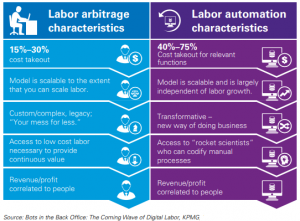What are the Common Errors in Automation Implementation and How to Avoid Them
Automation is a buzzword in the business world today, promising increased efficiency, reduced human error, and cost savings. While automation has the potential to revolutionize processes, it’s not without its pitfalls. In this article, we’ll explore the common errors in automation implementation and provide insights on how to avoid them.
Introduction to Automation Implementation
Automation involves using technology to perform tasks with minimal human intervention. It has become a cornerstone of modern business operations, enabling companies to streamline processes, enhance productivity, and deliver superior customer experiences. Businesses across industries are increasingly embracing automation to stay competitive. It allows companies to save time and resources while improving accuracy and consistency. However, reaping the benefits of automation requires careful planning and execution.
Common Errors in Automation Implementation
- Lack of Clear Objectives and Planning: One of the most common mistakes in automation implementation is a lack of clear objectives and a well-defined plan. Without a roadmap, organizations risk implementing automation in a haphazard manner, which can lead to inefficiency and confusion.
- Choosing the Wrong Automation Tools: Selecting the right automation tools is crucial. Making the wrong choice can result in an incompatible system that doesn’t meet the organization’s needs. It’s essential to thoroughly research and assess options before making a decision.
- Insufficient Employee Training: Employees are a critical part of the automation process. Inadequate training can lead to resistance and errors. Providing comprehensive training ensures a smooth transition and ongoing success.
- Ignoring Scalability and Flexibility: Automation systems should be scalable and flexible to accommodate future growth and changing needs. Failing to consider scalability can result in costly system replacements.
- Overlooking Data Security Concerns: Data security is paramount in today’s digital landscape. Neglecting security measures can lead to data breaches and legal issues. Ensure that automation systems have robust security features.
- Poor Integration with Existing Systems: Inefficient integration can disrupt existing workflows and lead to data silos. Ensure that automation systems seamlessly integrate with the organization’s current technologies.
- Failing to Monitor and Evaluate Automation Processes: Once automation is in place, continuous monitoring and evaluation are necessary. Ignoring this step can result in inefficiencies going unnoticed and unaddressed.
Best Practices to Avoid Automation Errors
- Establishing Clear Goals and Objectives: To avoid automation pitfalls, set clear goals and objectives for the implementation process. This helps keep the entire organization aligned and focused on the desired outcomes.
- Selecting the Right Automation Tools: Thoroughly assess and select the automation tools that best match your requirements. Choose tools that are user-friendly, compatible, and adaptable.
- Ongoing Training and Adaptation: Continuous training and adaptation are essential to ensure that employees are well-versed in the automated processes and can adapt to changes.
- Prioritizing Security and Data Protection: Place a high priority on data security and protection. Regularly update and test security measures to safeguard sensitive information.
- Efficient Integration Strategies: Work on seamless integration with existing systems to ensure a smooth flow of data and processes within the organization.
- Continuous Monitoring and Evaluation: Regularly monitor and evaluate automated processes to identify areas for improvement and optimization.
Conclusion
In conclusion, automation can bring remarkable benefits to businesses, but only if implemented correctly. By avoiding common errors listed above, organizations can make automation work for them. Follow best practices, including clear goal-setting, right tool selection, ongoing training, prioritizing security, efficient integration, and continuous monitoring, to ensure a successful automation journey.

